| Zeitschrift Umělec 2003/3 >> Commercial supplement | Übersicht aller Ausgaben | ||||||||||||
|
|||||||||||||
Commercial supplementZeitschrift Umělec 2003/301.03.2003 Jana Kalinová | neuigkeiten | en cs |
|||||||||||||
|
"Commercial supplement
Sometimes it happens that everything works out well in the end, and this throws me off so much that everything else, which should follow according to plan, collapses. Professor Knížak recently informed me via e-mail that the Prague Biennial had been a smashing success, the reviews positive, and the National Gallery was choosing ten of the most important works for its collections, from every age-group(?!). Unfortunately they’re broke, and so they were asking selected artists to donate their works to the Gallery. As I read the note (it was signed by Prof. Knížák, but distributed by Mrs. Fenclová), I wondered how many artists got the same thing. The theme of “If you forward this letter to ten people you will have good luck” was perhaps more an inspiration to the author of the letter, than a hope for the addressed. The author obviously knew that there were enough potential players, so why immediately attract a winner. Either you play for the joy of the game, or don’t play at all. For some time I contemplated which of my feelings was stronger: the pleasure of someone being interested in me, or the disappointment that they wanted my work free of charge. Vanity won out in the end. Later I overheard that the National Gallery was buying after all. Information from first and second hand came together, but I needed confirmation. So I called the National Gallery where they put me through to the director of the collections of modern and contemporary art. Dr. Tomáš Vlček was kind and obliging, but all I learned was that NG was buying the whole exhibition Nejmladší, because they had a chance to pick it up for a song. He said they were buying nothing from the Prague Biennial, but they were asking selected artists to donate their work. The Gallery felt that they wouldn’t be able to buy the presented artists as cheaply as they could from the exhibition Nejmladší. Coming from NG, such a judgement call sounds absurd. As if they’d said: “You have a higher value than the art which has a value to us.” Most of the works were bought at bargain-basement prices. Those works that were also final art projects by students known mostly from school exhibitions, this sub-price was impressive, even ostentatious and unnecessary. So I expected that as long as NG was so choosy in spending its money, it would just as indiscriminately ask for donations from all the artists included in the Czech section of the Prague Biennial. But here it was stricter with itself, and did not ask, for example, this year’s Chalupecký laureate. It is true that during the Prague Biennial no one knew who was to going to be nominated; yet I believe that the reasons a winner is chosen are obvious even to experts outside the Chalupecký jury. According to Charlota Kotíková, his skill using various media in his series Collector gave the victory to Michal Pěchouček. Unfortunately no one recognized this at the time of its exhibition in the Biennial.... After that, I lost all ambitions, somewhere, and I haven’t seen them since. As you read this, I’m working as a chamber maid for the mountain cottage called Výrovka. Someday, when I have the feeling that I’ve discovered something big and great, the sound of the howling wind will drown out the jammed vacuum cleaner, and the staff will know that Kalinová is having ambitions again. A day after President Václav Klaus awarded the medal of merit in the field of art to Adolf Born, the Ministry of Culture distributed its prizes at Vítkov. Stage scenery consisted of three living gold sculptures — muses — seemingly holding up a huge pseudo-marble block on which jingles, titles and short blurbs about the nominated artists were projected. The Muse of Theater was given the unhappy duty of supporting the block with one hand raised over her head, which consequently went bloodless and someone had to constantly run a glass of water out to her to keep her from fainting. During the speeches, Minister of Culture Pavel Dostál apologized, saying he’d better cut it short as one of the Muses was not feeling well and his speech would only prolong the ceremony. The presentation then went on at its planned length. I left early to catch at least one or two performances at Four Days in Motion. Even though the venue was Šárecké údolí (outside of Prague) and we got lost twice finding it, I still think that putting on a theater festival in such a remote place is a good idea. Trying to do the same thing on Wenceslas Square would have made no difference, and the threat of ditching out to drink in the nearby pubs during the weaker performances would be too great. No worries about that here. In one large industrial space the barroom, Barhyber Bar, served as a congregating grounds for actors, performers and spectators. The space was made by the secretive art group Unit and the whole bar service and location turned into one long performance. Check out the photo, as I am unable to describe it. As hunters go hunting in the autumn, those more human types set off on the trail of Performance. It’s good to carry a video camera or camera with you so that you have something to put in the catalogue. If it ever happens that you show up without one, the experience is as intense as the time I was in England on a scholarship, when, while lying in a sleeping bag in the street, somewhere in the middle of London, I saw a fox. Even though I come from the country, I’ve never seen a fox anywhere else. Just as unexpectedly, I saw performances in Ralsko [Ed.— A military zone the Soviet army occupied from 1968 to 1990. The army totally destroyed the landscape and the cultural roots of the region.], a place with its own history, which to me is completely bound up in the present. If something is not linked to a place, and the time is unimportant, then it disrespects the place’s history. But if I could have predicted the butterfly effect of this one, a tornado in China would be too small a reaction. Brothers David (a student of Zděnek Beran) and Martin Koutecký, along with Jiří Miláček (a student of Milan Knížák) planned one morning, after a party, to bury “Istriol.” Three performers, six invited guests and about fifty locals stood on the road as a few cars passed by. If the rain hadn’t tapered off, the funeral procession would never have begun. We marched behind the three preceptors, who were celebrating the mummy resting on the roof of a slowly moving car. We chatted about everything except the ceremony, but still I had the pleasant feeling that I was taking part in a ceremony no one expected me to believe in. Long after the event I learned that that very evening the police showed up and took samples of the charred remains of Istriol, and the organizers were under threat of arrest until the laboratory examination had been completed. Fortunately, no human tissue was found. Then I remembered what my grandma used to say: Pray that your wishes never come true. Two days before the Istriol action, one of the organizers called a friend who works in a hospital and asked him if he would bring a liter of human blood so that the action would look more real. He couldn’t do it. However, it still doesn’t look like the city representatives and locals are going to make peace. They say that someone pulled up the buried hatchet and one man even took it in to the municipal office after the police had gone… So maybe they’ll be blood after all. The National Gallery recently demonstrated a unique managerial maneuver on how to persuade itself that it was purchasing at half price. They bought one work from Jan Benediktík’s series of butterfly-fighters for 15,000 crowns, and then gave him a piece of advice: Don’t sell any other works from your series for less than 30,000 — the value of his work as determined by NG. "
01.03.2003
Empfohlene Artikel
|
|||||||||||||
|
04.02.2020 10:17
Letošní 50. ročník Art Basel přilákal celkem 93 000 návštěvníků a sběratelů z 80 zemí světa. 290 prémiových galerií představilo umělecká díla od počátku 20. století až po současnost. Hlavní sektor přehlídky, tradičně v prvním patře výstavního prostoru, představil 232 předních galerií z celého světa nabízející umění nejvyšší kvality. Veletrh ukázal vzestupný trend prodeje prostřednictvím galerií jak soukromým sbírkám, tak i institucím. Kromě hlavního veletrhu stály za návštěvu i ty přidružené: Volta, Liste a Photo Basel, k tomu doprovodné programy a výstavy v místních institucích, které kvalitou daleko přesahují hranice města tj. Kunsthalle Basel, Kunstmuseum, Tinguely muzeum nebo Fondation Beyeler.
|







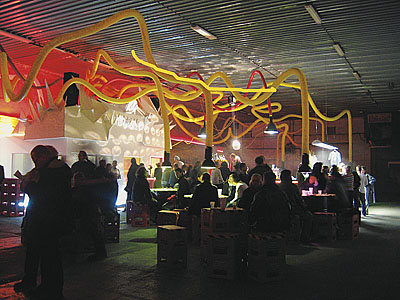













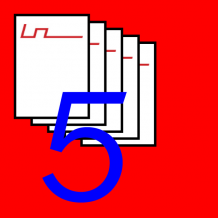




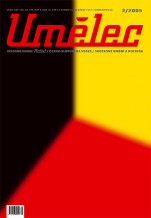
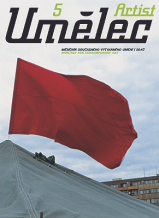
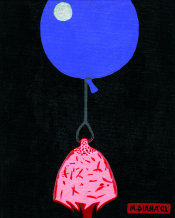
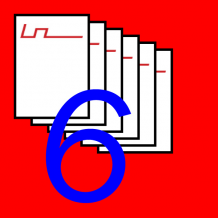


 New book by I.M.Jirous in English at our online bookshop.
New book by I.M.Jirous in English at our online bookshop.
Kommentar
Der Artikel ist bisher nicht kommentiert wordenNeuen Kommentar einfügen